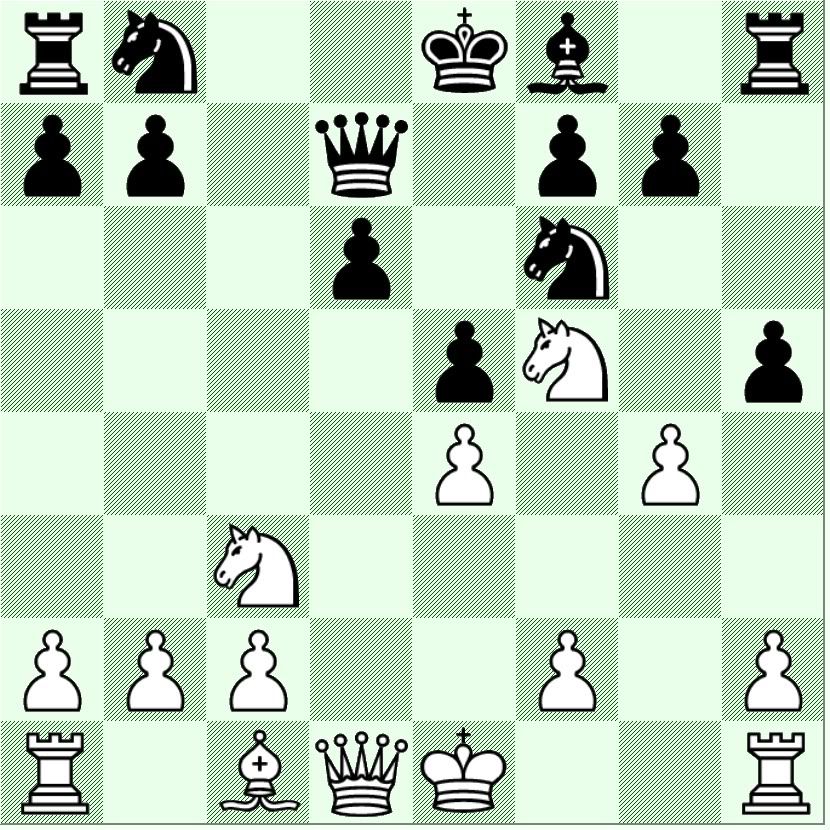6...e5 7.Bb5
For 7.Nf5, see Keres Attack with 6...e5
Detours through the next several moves seem rare.
7...Bd7 8.Bxd7 Qxd7 9.Nf5 h5

Now, White has some choices.
10.f3 appears to have been introduced by Ferdinand Pop in a correspondence game in 1964, and it has scored over 60%. Popp won his game, which I reproduce here.
Popp,F - Schnieders,H [B81]
Correspondence, Germany 1964
1.e4 c5 2.Nf3 e6 3.d4 cxd4 4.Nxd4 Nf6 5.Nc3 d6 6.g4 e5 7.Bb5+ Bd7 8.Bxd7+ Qxd7 9.Nf5 h5 10.f3 hxg4 11.fxg4 g6 12.Ne3 Bh6 13.Qf3 Bg5 14.h4 Rxh4 15.Nf5 Bxc1 16.Rxh4 gxf5 17.Rh8+ Ke7 18.Rxc1 fxg4 19.Qg3 1–0
However, among master level players since 2000, 10.f3 has appeared only twice, both in games among juniors, and both were wins for Black. Rather, Alexei Iljushin won both games. Rather than abandoning the line, it behooves the scholar to understand Iljushin's ideas and comprehend where his opponents erred.
Shinkevich,V (2440) - Iljushin,A (2515) [B81]
Russian Junior Championship, Ufa 2000
1.e4 c5 2.Nf3 e6 3.d4 cxd4 4.Nxd4 Nf6 5.Nc3 d6 6.g4 e5 7.Bb5+ Bd7 8.Bxd7+ Qxd7 9.Nf5 h5 10.f3 hxg4 11.fxg4 Rh3 12.Qe2 Qc6 13.Ng3 Nbd7 14.Bg5 d5 15.Bxf6 d4 16.Nd5 Nxf6 17.Nxf6+ gxf6 18.0–0 Rc8 19.Kg2 Rh8 20.c3 Bh6 21.cxd4 exd4 22.Nf5 Be3 23.Nxe3 Qxe4+ 24.Rf3 Kf8 25.Kg1 dxe3 26.Rxe3 Qg6 27.Rd1 Kg7 28.h3 Rc2 29.Qd3 Rxb2 30.Qxg6+ Kxg6 31.Rf3 Rc8 32.Rdf1 Rc6 33.R1f2 Rxf2 34.Rxf2 Ra6 35.Kg2 Ra3 36.Rb2 b6 37.Kh2 f5 38.gxf5+ Kxf5 39.Kg2 Kg5 40.Kh2 f5 41.Kg2 f4 42.Rf2 b5 43.Kh2 b4 44.Rg2+ Kh5 45.Rb2 a5 46.Rf2 Kg5 47.Rg2+ Kf5 48.h4 Rg3 49.Rc2 Kg4 50.Rc5 Ra3 51.h5 Rxa2+ 52.Kg1 b3 0–1
Mastrovasilis,D (2386) - Iljushin,A (2509) [B81]
European Junior Championship, Aviles 2000
1.e4 c5 2.Nf3 e6 3.d4 cxd4 4.Nxd4 Nf6 5.Nc3 d6 6.g4 e5 7.Bb5+ Bd7 8.Bxd7+ Qxd7 9.Nf5 h5 10.f3 hxg4 11.fxg4 Rh3 12.Bg5 Rxc3 13.bxc3 Nxe4 14.Be3 d5 15.0–0 Nc6 16.c4 d4 17.Qf3 Nc5 18.Bd2 e4 19.Rae1 Qe6 20.Qg2 0–0–0 21.c3 d3 22.Ng3 Ne5 23.Nxe4 Nxc4 24.Ng5 Qb6 25.Kh1 f6 26.Ne4 Qc6 27.Rf2 Re8 28.Ng3 Rxe1+ 29.Bxe1 Qe6 30.Bd2 Nxd2 31.Rxd2 Qe1+ 32.Nf1 Ne4 33.Qf3 Nxd2 34.Qf5+ Kc7 35.Qa5+ Kc6 36.Qa4+ Kc7 37.Qa5+ Kc8 38.Qf5+ Kb8 39.Qf4+ Ka8 0–1














No comments:
Post a Comment